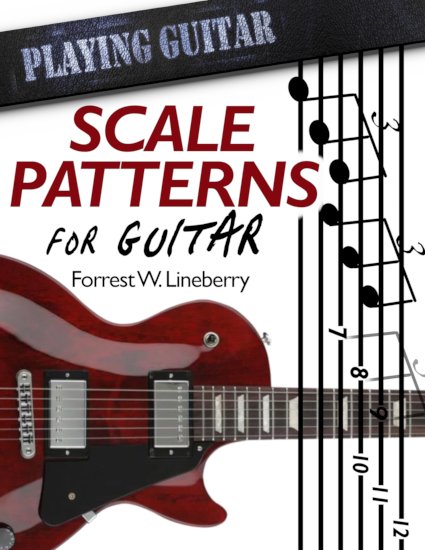Bonus Lesson
This is a companion lesson to my book Scale Patterns for Guitar. The book covers 134 different melodic patterns for practicing scales and working out fingerings on the guitar fretboard. This bonus lesson takes six of the patterns presented in the book and applies them around the circle of 5ths.
If you’re unfamiliar with the circle of 5ths, I have a free lesson that will teach you all about it. Click Here
If you are unfamiliar with scales sequences, I have a free lesson for that, too. Click Here
The six sequences I used to construct this etude can be found by clicking here.
Back-Cycling the Circle
A commonly used device for constructing chord progressions and making key changes in songs involves a technique called back-cycling. All this means is following roots that move counter-clockwise around the circle of 5ths. This is also called the circle of 4ths:

In the following Exercise each sequence will be played from roots following the circle of 4ths, beginning on C, and traveling around the circle to arrive at C, again. There are six sequences and twelve keys, so each sequence is broken into two parts—ascending and descending. The ascending sequence will be in the one key and the descending sequence will be in the next key.
The first sequence ascends the C major scale and descends the F major scale.
The second sequence ascends the B♭ major scale and descends the E♭ major scale.
The third sequence ascends the A♭ major scale and descends the D♭ major scale.
The fourth sequence ascends the G♭ major scale and descends the B major scale.
The fifth sequence ascends the E major scale and descends the A major scale.
The sixth sequence ascends the D major scale and descends the G7 scale (Mixolydian mode).
The G7 sequence leads to a chromatic, blues-style ending on C7.
Performance Notes
Performing this piece is pretty straightforward except for the tempo and rhythm change that starts at measure 15. The rhythm shifts from a two-notes-per-beat feel to a triplet feel. Triplets at the original tempo would be pretty fast, so I put in a ritardando (fancy way of saying gradually slow down) to a lower tempo to keep the triplets that follow in a more comfortable shuffle groove. I included the chord changes on top of the staff so you can follow the harmony or even practice the chords along with the backing track track provided.
Listen to Performance:
Hidden Content Below Here
Unfortunately, I have to protect my original content from being stolen by scammers and bots. This means you will need to sign up for a member account and log in before you can view download links and other hidden content on this site.
Registration is simple and 100% free. Your membership will allow you to download the book sound files and also give you exclusive access to members only bonus lesson content and practice resources.
Just fill out the form below to claim your membership privileges.


